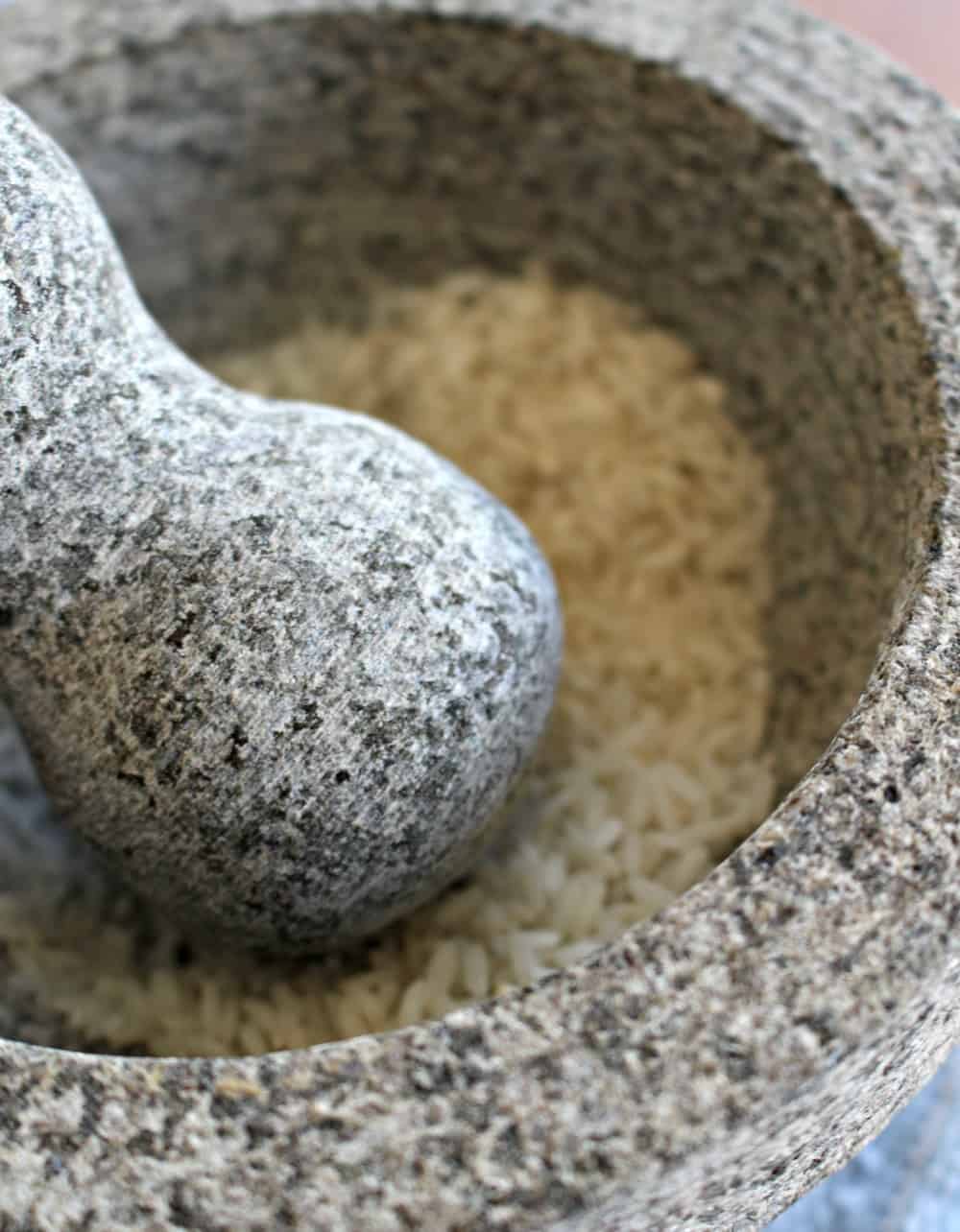
Learn How to Season a Molcajete by following these easy steps.
This post may include affiliate links. As an Amazon Associate I earn from qualifying purchases.
This tool is a staple in any Mexican kitchen. It’s used to crush spices and make salsas just like a food processor.
With it, you’ll be able to create Mexican restaurant quality at home with this traditional stone bowl.
And now that you have purchased your brand new molcajete, you need to “cure” or “season” it.
Table of Contents
🌋What is a Molcajete?
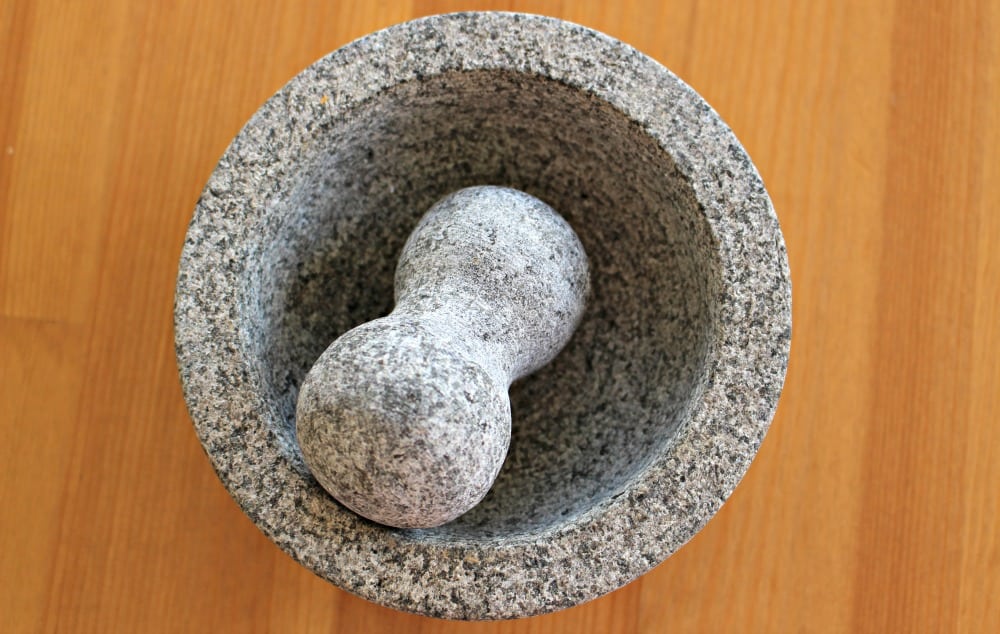
In short, a molcajete is a Mexican mortar and pestle. It dates back … wayyyyy back… to thousands of years ago when the Aztecs and Mayans were the main guys in Mexico.
The name comes from the Aztec word mashup of “seasoning” and “bowl.”
A Mexican molcajete is made of porous volcanic rock or volcanic basalt. That’s why new molcajetes need to be seasoned or “broken in.” If not, loose volcanic basalt will get in your food.
They are most likely dirty because of their tiny holes, storing dirt. You don’t want a dirty salsa.
The Seasoning Process
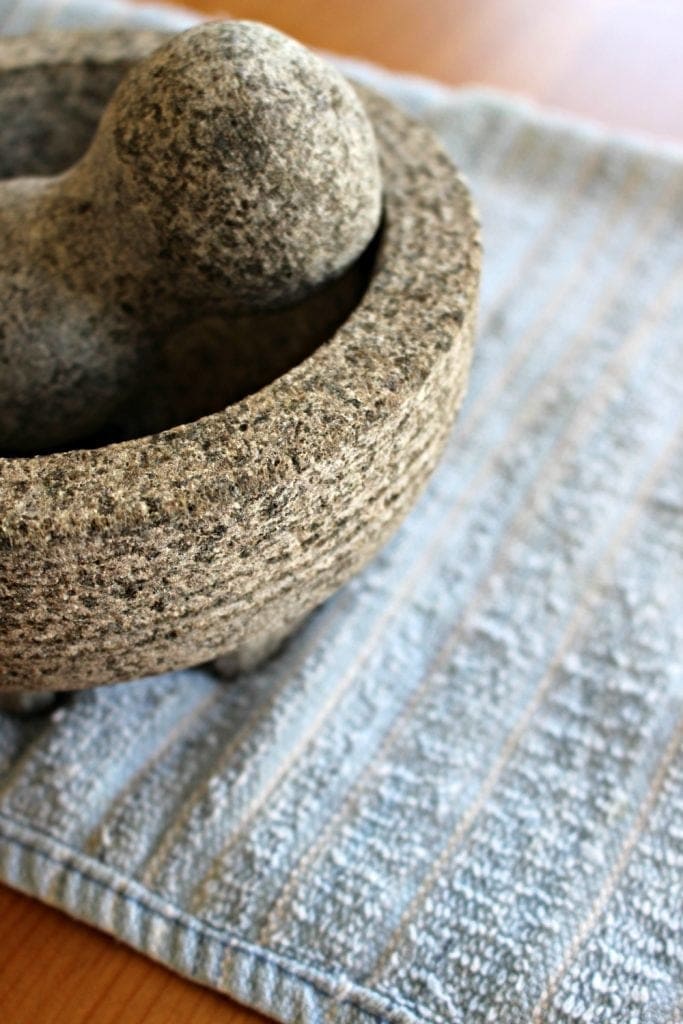
Here’s what you do before using this traditional Mexican mortar for the first time.
- Start by placing a kitchen towel underneath your own molcajete.
- This will help prevent it from moving around and scraping your table.
A molcajete is simply a pre-hispanic mortar and pestle. No Mexican kitchen should be without one. The curing process is just that, a process.

The traditional and most common way to season a molcajete is by using dry rice.
You can also use cumin seeds, dried corn, dried beans, or rock salt.
White rice, I find, is cheap, and it is far easier to tell if it’s ready with a white substance.
🧼 Don’t Use Soap!
- Soapy water will get into the little holes on the inside of the molcajete, and you’ll end up with salsas that taste of soap. Warm water or hot water and a stiff brush are all you need for cleaning.
- What I am showing you here is how the volcanic rock mortar was traditionally and should be cleaned.
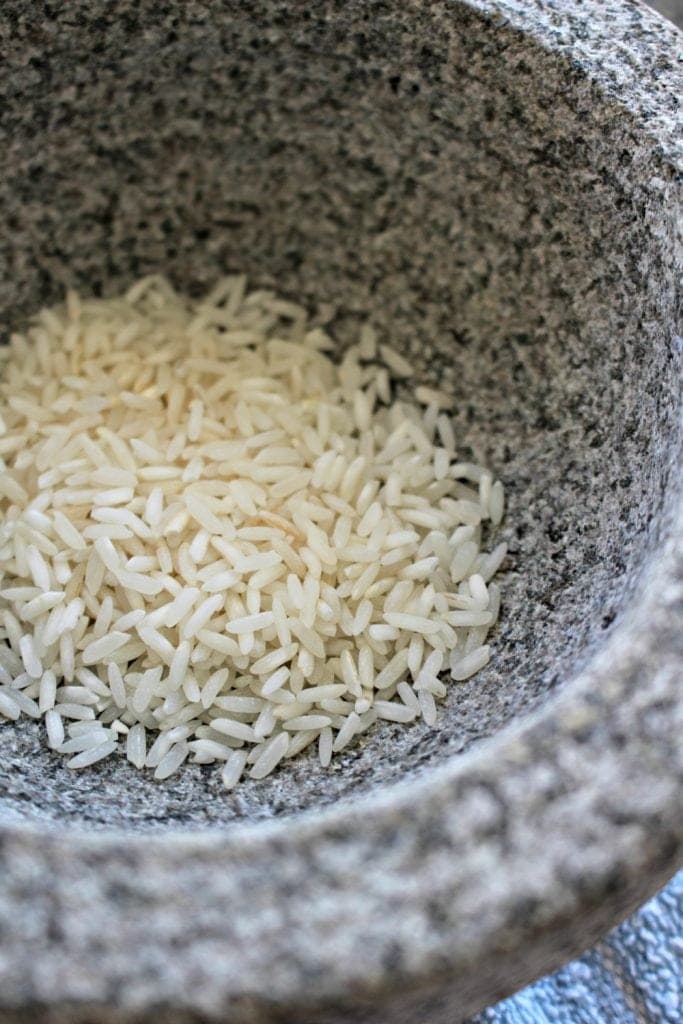
The first step is to grind the dry uncooked rice with the pestle as best as you can.
Don’t be afraid to get in there. Grind away! Just don’t bump and grind. Wink. Wink.
Some people find that a wire brush is the best way to get this done. I say, find the easiest way that works for you.
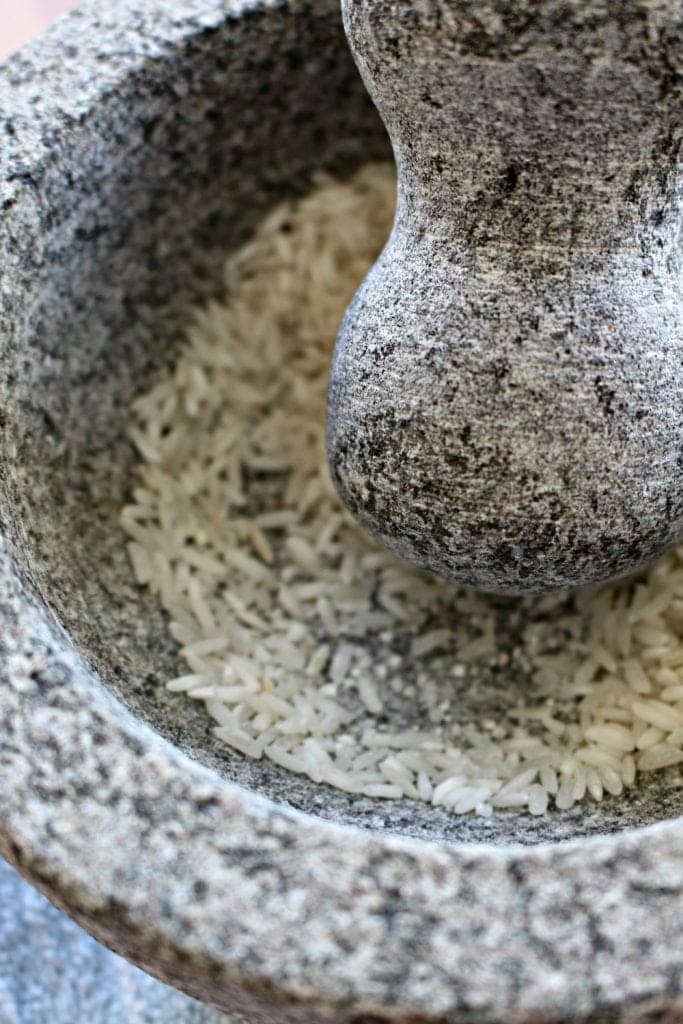
- Move the dried rice around the bowl in a circular motion.
- You also want to work your way up the sides of the molcajete and not just the center of the bowl.
Remember, all of this hard work is worth it.
An authentic molcajete is the perfect tool for traditional Mexican cuisine.
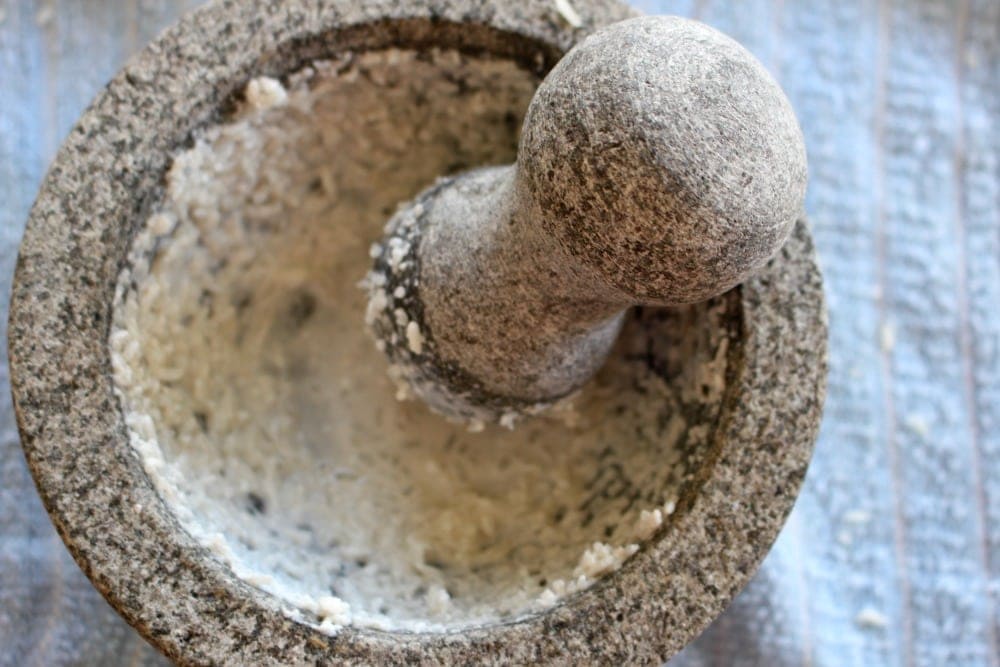
- Add a little water to the dry white rice rice. It should be a fine powder.
- Mix it up and do more grinding.
Again, make sure to get the sides. It’s a side job, not your full-time job. LOL.
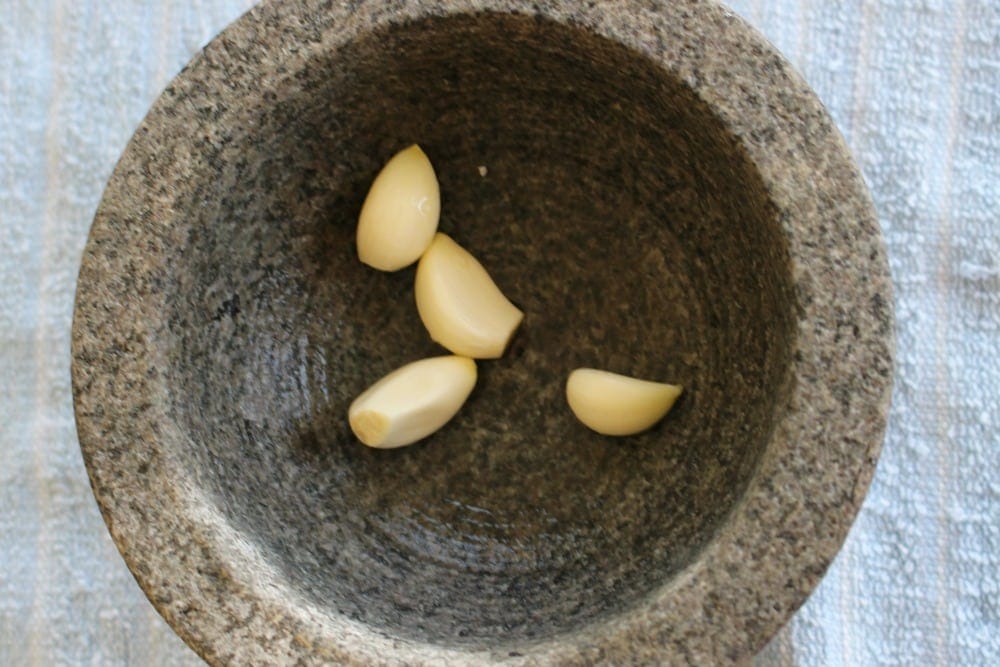
- Rinse and repeat.
- This time, add a few cloves of garlic.
This molcajete did not have a lot of dirt. Thank goodness! Some are very, very dirty, and the rice will turn into a grey paste.
If that’s the case, keep grinding until the rice is white and not gray.
If you get a stinky mortar, repeat this step a second time until the smell goes away.
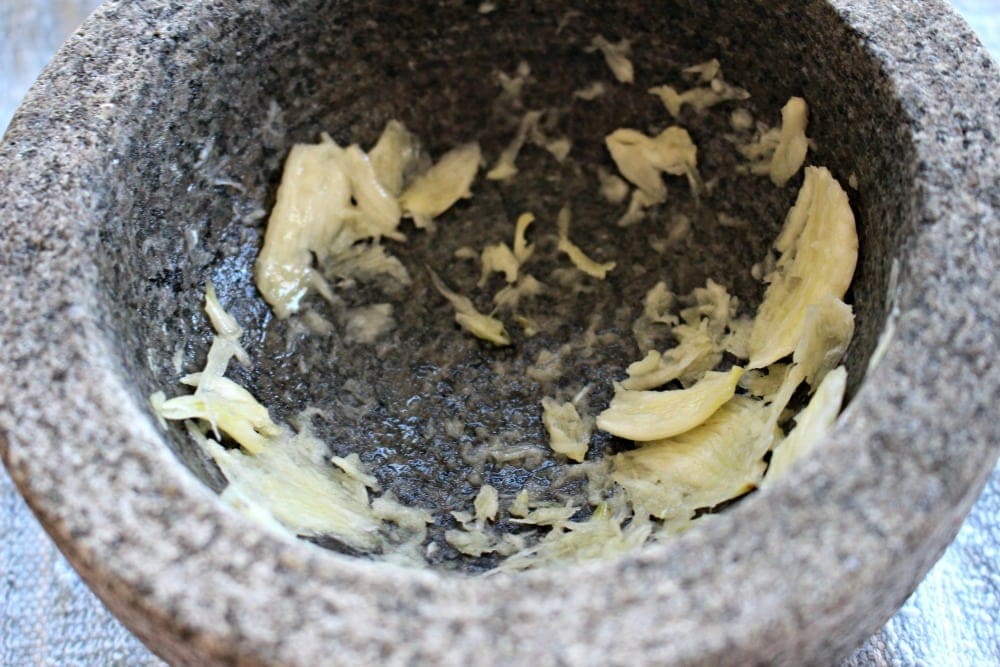
The volcanic stone is porous. That means that it has small holes in it.
By seasoning a molcajete with garlic cloves, you’re doing two awesome things – curing it and adding flavor. Win. Win.

- Don’t forget to turn the pestle and use the other side to grind.
- Add a handful of rice to the garlic and keep going.
The pestle is made of the same volcanic basalt and also needs to be seasoned.
We are only doing the inside of the bowl and the pestle, not the entire molcajete (short legs or the outside). Just what will touch your food.
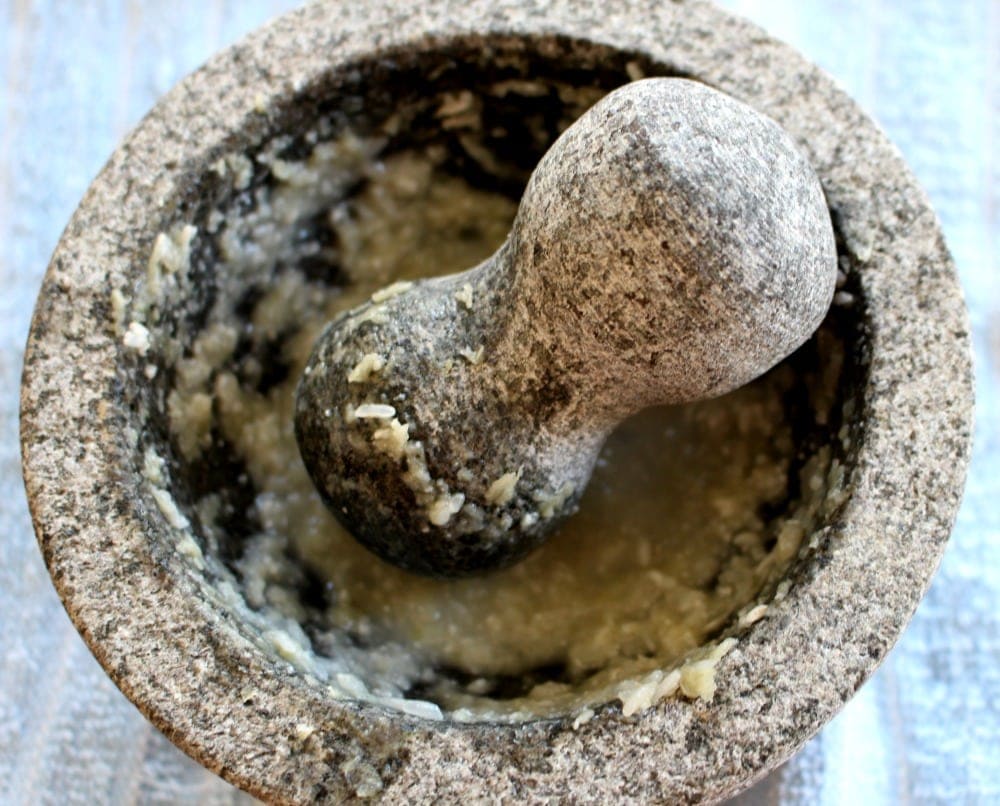
- Now add a splash of water. The water helps in creating a smooth paste.
- If the paste is murky and gray, repeat this step over and over again.
I know. I know.. It can be a pain, but soooo worth it!
NOTE: You might be tired of grinding at this point, but if it needs another round of grinding, do it! The loose stone has to go.
You don’t want to feed your family “volcanic” salsa. Talk about explosive food! Haha.
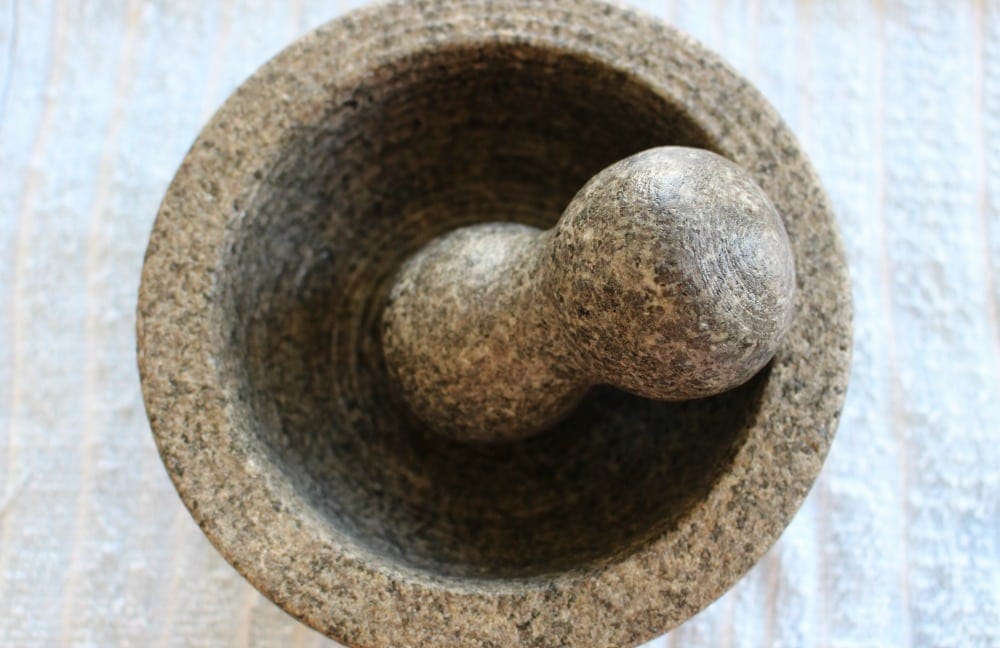
Last Step
- Now for a final rinse with warm water.
- Do this a couple of times.
- Let your new kitchen tool dry overnight in the kitchen sink or on the countertop. The next day, your molcajete will be ready to make the first salsa.
🙋🏻♀️ Frequently Asked Questions
Absolutely, you can use rock salt or dried corn but rice is the best option. The great thing is that as long as it’s a hard, dry substance, it should work for the seasoning process.
Once properly seasoned, your molcajete should last for years without requiring re-seasoning. However, if you notice a change in texture or an off-taste, it might be time for a touch-up.
Authentic molcajetes are carved from volcanic rock, making them naturally rough. This texture actually aids in the grinding process, providing resistance against whatever you’re grinding.
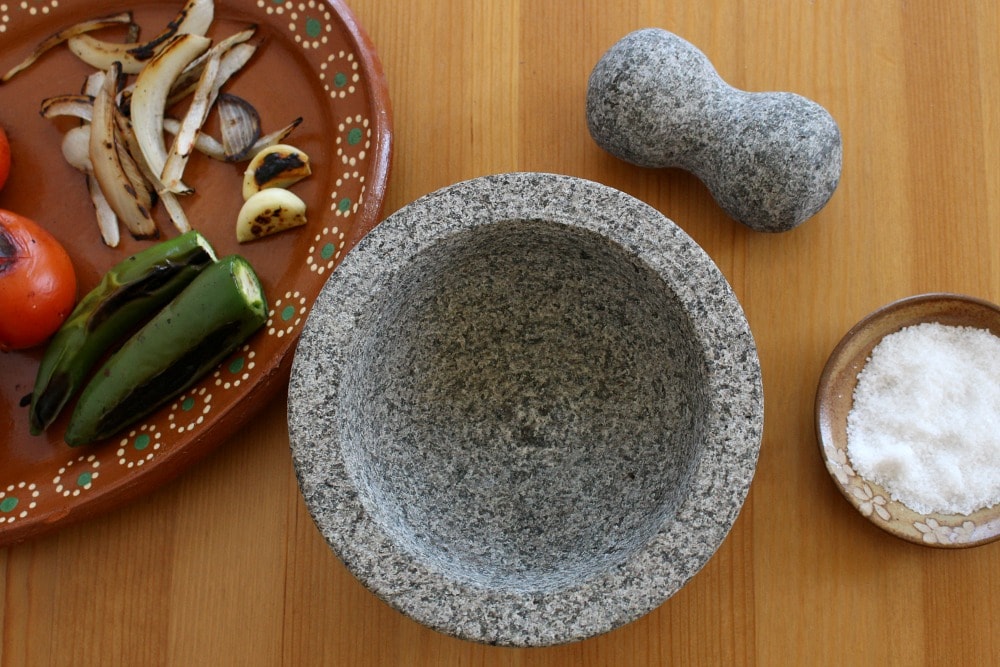
Molcajete Salsa Recipes
Learning how to season a molcajete is hard work. But it’s a labor of love for good Mexican dishes.
They also make great heirlooms that you can pass down to the next generation for their Mexican cooking adventures. Happy Grinding!
😋 HUNGRY FOR MORE?
Be sure to subscribe to my newsletter and follow along on Facebook, Instagram, Pinterest, Twitter for my latest recipes and videos.
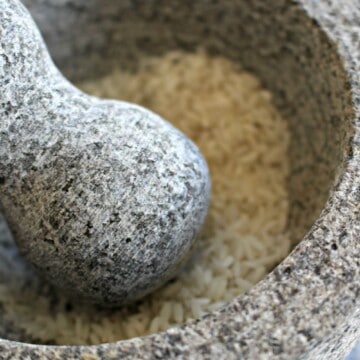
How to Season a Molcajete + VIDEO
Ingredients
- 1 unseasoned molcajete
- ½ cup rice
- ½ cup water
- 4-5 garlic cloves
- Water
Instructions
- Add ¼ cup rice to a molcajete
- Grind until the rice is powdery.
- Add a few tablespoons of water to the molcajete.
- (Enough to create a paste).
- Using the mortar, mix the water and rice and grind the entire bowl.
- Make sure you also get the sides of the bowl.
- Rinse.
- Add the garlic cloves to the molcajete.
- Grind the garlic with the mortar.
- Add the remaining rice to the molcajete.
- Grind to mix the rice and garlic to create a thick paste.
- Add some more water.
- (Enough to create a paste)
- Mix with the mortar and grind, scraping the sides.
- If the mixture is gray, rinse and repeat this step.
- If not, rinse and air dry.
- It will take 24 hours before it’s ready to use.
Video
Notes
Nutrition
For Mexican Salsa Recipes:
Chile de Arbol Salsa
Salsa Borracha
Chipotle Salsa
Avocado Mango Salsa
Roasted Salsa Verde Recipe
Roasted Tomato Salsa
Salsa de Aguacate
Mexican Red Salsa
Pineapple Salsa

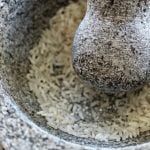
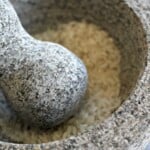

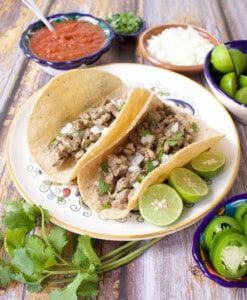

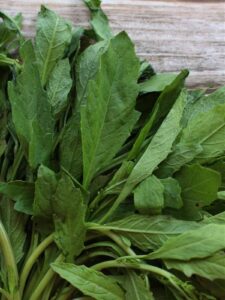
Leave a Reply